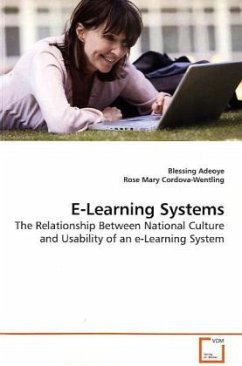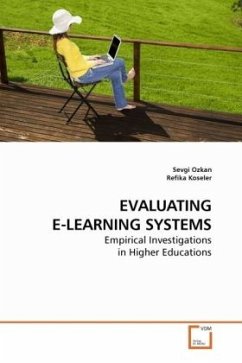
IMPLEMENTATION OF ERP SYSTEMS IN HIGHER EDUCATION
RELATIONSHIP BETWEEN MODES OF PARTICIPATION AND SATISFACTION WITH IMPLEMENTATION OF ENTERPRISE RESOURCE PLANNING SYSTEM IN HIGHER EDUCATION
Versandkostenfrei!
Versandfertig in 6-10 Tagen
45,99 €
inkl. MwSt.

PAYBACK Punkte
23 °P sammeln!
Participants of the study were 194 higher education employees from colleges and universities in the United States who have participated in a specified enterprise resource planning system implementation. Various modes of participation (Barki & Hartwick, 1994; Cotton et al., 1988; Hinckley, 1978; Nutt, 1986) were identified and an instrument was created to determine the relationship between the various modes (Hinckley, 1978) and satisfaction with product (Doll & Torkzadeh, 1988) during an implementation of a specified enterprise resource planning system in higher education. When evaluating the...
Participants of the study were 194 higher
education employees from colleges and universities
in the United States who have participated in a
specified enterprise resource planning system
implementation.
Various modes of participation (Barki & Hartwick,
1994; Cotton et al., 1988; Hinckley, 1978; Nutt,
1986) were identified and an instrument was created
to determine the relationship between the various
modes (Hinckley, 1978) and satisfaction with product
(Doll & Torkzadeh, 1988) during an implementation of
a specified enterprise resource planning system in
higher education.
When evaluating the 32 ways that employees could
participate in an enterprise resource planning
system implementation, employees rated their top
three activities as (a) team membership, (b)
implementation planning, and (c) attending training
sessions. These findings suggest an importance of
implementation planning, teamwork, training and
communication during an enterprise resource system
implementation.
education employees from colleges and universities
in the United States who have participated in a
specified enterprise resource planning system
implementation.
Various modes of participation (Barki & Hartwick,
1994; Cotton et al., 1988; Hinckley, 1978; Nutt,
1986) were identified and an instrument was created
to determine the relationship between the various
modes (Hinckley, 1978) and satisfaction with product
(Doll & Torkzadeh, 1988) during an implementation of
a specified enterprise resource planning system in
higher education.
When evaluating the 32 ways that employees could
participate in an enterprise resource planning
system implementation, employees rated their top
three activities as (a) team membership, (b)
implementation planning, and (c) attending training
sessions. These findings suggest an importance of
implementation planning, teamwork, training and
communication during an enterprise resource system
implementation.












